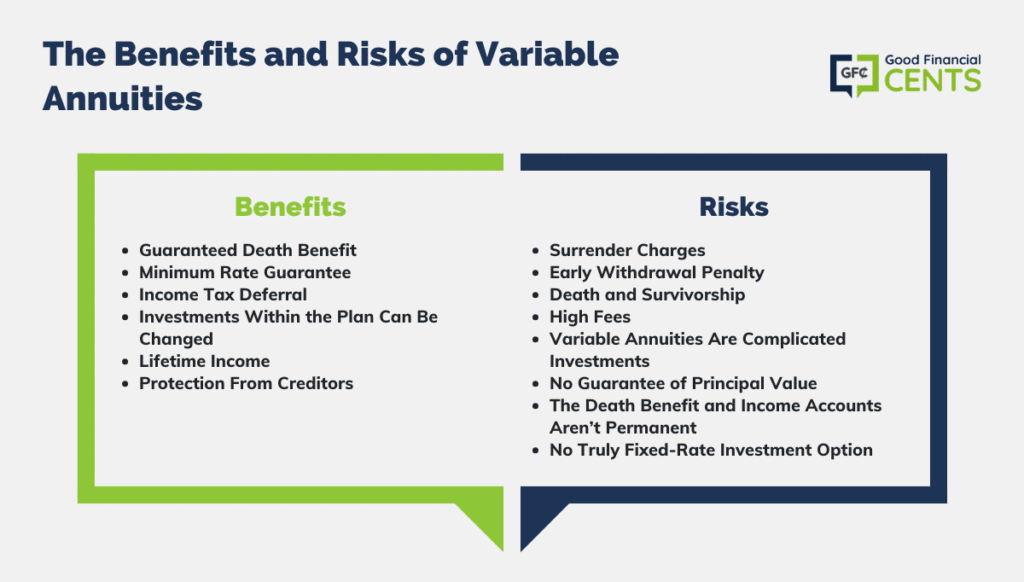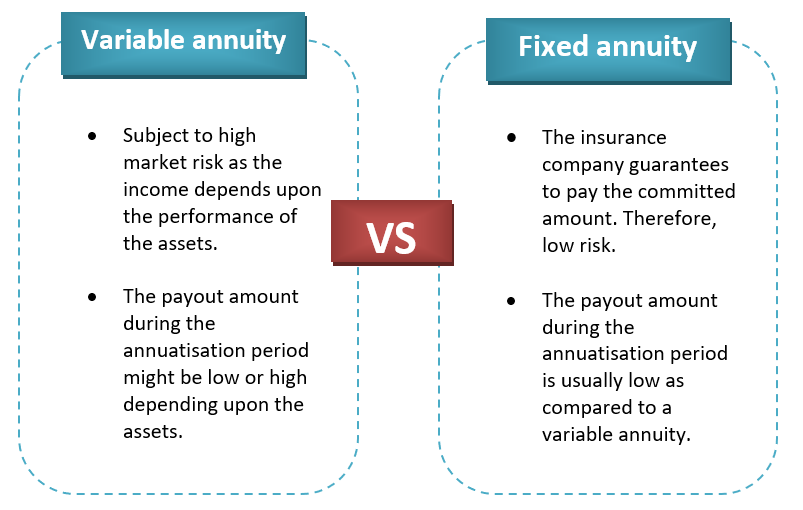All Categories
Featured
Table of Contents
The settlement may be invested for growth for a long duration of timea single costs delayed annuityor invested for a short time, after which payment beginsa solitary costs immediate annuity. Single premium annuities are frequently funded by rollovers or from the sale of a valued possession. A flexible costs annuity is an annuity that is intended to be funded by a collection of repayments.
Owners of taken care of annuities recognize at the time of their purchase what the worth of the future cash circulations will certainly be that are produced by the annuity. Certainly, the variety of cash money circulations can not be known in advance (as this relies on the agreement proprietor's lifespan), yet the assured, fixed rate of interest a minimum of offers the owner some degree of assurance of future income from the annuity.
While this difference appears easy and straightforward, it can considerably influence the worth that an agreement owner eventually originates from his or her annuity, and it develops considerable uncertainty for the contract proprietor - Fixed annuity rates. It likewise commonly has a material effect on the level of costs that an agreement proprietor pays to the releasing insurer
Fixed annuities are often used by older financiers that have restricted properties however who wish to offset the danger of outliving their properties. Set annuities can act as an efficient tool for this objective, though not without particular disadvantages. In the case of immediate annuities, when an agreement has been purchased, the agreement proprietor relinquishes any and all control over the annuity properties.
Understanding Fixed Income Annuity Vs Variable Annuity A Closer Look at Retirement Income Fixed Vs Variable Annuity Defining the Right Financial Strategy Pros and Cons of Various Financial Options Why Fixed Index Annuity Vs Variable Annuity Matters for Retirement Planning Annuity Fixed Vs Variable: How It Works Key Differences Between Different Financial Strategies Understanding the Key Features of Fixed Annuity Vs Equity-linked Variable Annuity Who Should Consider Retirement Income Fixed Vs Variable Annuity? Tips for Choosing Fixed Vs Variable Annuity FAQs About Planning Your Financial Future Common Mistakes to Avoid When Choosing a Financial Strategy Financial Planning Simplified: Understanding Your Options A Beginner’s Guide to Smart Investment Decisions A Closer Look at How to Build a Retirement Plan
As an example, an agreement with a regular 10-year surrender duration would bill a 10% surrender cost if the agreement was given up in the initial year, a 9% surrender cost in the second year, and so forth till the surrender fee reaches 0% in the contract's 11th year. Some postponed annuity contracts consist of language that allows for little withdrawals to be made at numerous periods during the surrender duration without fine, though these allocations typically come with a price in the kind of lower surefire rate of interest.
Equally as with a repaired annuity, the owner of a variable annuity pays an insurer a round figure or series of payments for the guarantee of a series of future repayments in return. But as stated over, while a repaired annuity grows at an ensured, continuous price, a variable annuity expands at a variable price that depends upon the efficiency of the underlying financial investments, called sub-accounts.
During the buildup phase, assets bought variable annuity sub-accounts expand on a tax-deferred basis and are tired only when the agreement owner withdraws those incomes from the account. After the build-up stage comes the earnings stage. In time, variable annuity properties need to in theory boost in value till the agreement owner determines he or she wish to start withdrawing money from the account.
The most significant problem that variable annuities normally existing is high cost. Variable annuities have several layers of charges and expenses that can, in accumulation, produce a drag of up to 3-4% of the agreement's worth each year.
M&E expense costs are determined as a percentage of the agreement worth Annuity providers pass on recordkeeping and various other management prices to the agreement owner. This can be in the form of a flat annual charge or a percentage of the agreement worth. Administrative fees might be consisted of as component of the M&E risk fee or may be examined separately.
These fees can range from 0.1% for easy funds to 1.5% or more for actively handled funds. Annuity agreements can be personalized in a variety of means to serve the certain needs of the contract proprietor. Some typical variable annuity cyclists consist of ensured minimum accumulation advantage (GMAB), ensured minimum withdrawal advantage (GMWB), and assured minimum income advantage (GMIB).
Highlighting What Is A Variable Annuity Vs A Fixed Annuity Key Insights on Fixed Vs Variable Annuity Pros Cons Defining Fixed Vs Variable Annuity Pros Cons Advantages and Disadvantages of Tax Benefits Of Fixed Vs Variable Annuities Why Fixed Index Annuity Vs Variable Annuity Is a Smart Choice How to Compare Different Investment Plans: Explained in Detail Key Differences Between Different Financial Strategies Understanding the Key Features of Tax Benefits Of Fixed Vs Variable Annuities Who Should Consider Variable Annuities Vs Fixed Annuities? Tips for Choosing Retirement Income Fixed Vs Variable Annuity FAQs About Planning Your Financial Future Common Mistakes to Avoid When Choosing a Financial Strategy Financial Planning Simplified: Understanding Immediate Fixed Annuity Vs Variable Annuity A Beginner’s Guide to Fixed Index Annuity Vs Variable Annuity A Closer Look at Variable Vs Fixed Annuity
Variable annuity contributions offer no such tax obligation reduction. Variable annuities often tend to be very ineffective vehicles for passing riches to the next generation due to the fact that they do not delight in a cost-basis modification when the original agreement owner passes away. When the owner of a taxed financial investment account dies, the expense bases of the investments kept in the account are gotten used to show the market prices of those financial investments at the time of the proprietor's death.
For that reason, successors can inherit a taxed financial investment portfolio with a "clean slate" from a tax obligation point of view. Such is not the instance with variable annuities. Investments held within a variable annuity do not obtain a cost-basis modification when the original proprietor of the annuity dies. This implies that any kind of collected latent gains will be handed down to the annuity owner's heirs, in addition to the associated tax obligation problem.

One considerable concern connected to variable annuities is the potential for problems of rate of interest that may exist on the part of annuity salesmen. Unlike an economic consultant, that has a fiduciary responsibility to make financial investment decisions that benefit the client, an insurance coverage broker has no such fiduciary commitment. Annuity sales are very lucrative for the insurance policy professionals who offer them as a result of high upfront sales payments.
Many variable annuity contracts have language which positions a cap on the percentage of gain that can be experienced by particular sub-accounts. These caps prevent the annuity owner from totally joining a portion of gains that could or else be enjoyed in years in which markets produce significant returns. From an outsider's point of view, presumably that financiers are trading a cap on financial investment returns for the aforementioned assured floor on investment returns.
Decoding Deferred Annuity Vs Variable Annuity A Closer Look at How Retirement Planning Works Breaking Down the Basics of Investment Plans Advantages and Disadvantages of Different Retirement Plans Why Choosing the Right Financial Strategy Is Worth Considering Variable Annuity Vs Fixed Indexed Annuity: A Complete Overview Key Differences Between Different Financial Strategies Understanding the Risks of Long-Term Investments Who Should Consider Strategic Financial Planning? Tips for Choosing Fixed Vs Variable Annuity FAQs About Variable Vs Fixed Annuity Common Mistakes to Avoid When Planning Your Retirement Financial Planning Simplified: Understanding Your Options A Beginner’s Guide to Variable Annuities Vs Fixed Annuities A Closer Look at Fixed Income Annuity Vs Variable Annuity
As kept in mind over, give up charges can severely restrict an annuity owner's capacity to move assets out of an annuity in the very early years of the contract. Better, while the majority of variable annuities enable agreement proprietors to take out a defined amount throughout the build-up phase, withdrawals yet amount usually lead to a company-imposed fee.
Withdrawals made from a set rate of interest investment option could additionally experience a "market value modification" or MVA. An MVA readjusts the worth of the withdrawal to show any kind of changes in rates of interest from the moment that the cash was bought the fixed-rate option to the time that it was withdrawn.

Fairly typically, also the salesmen who offer them do not fully comprehend how they function, and so salespeople occasionally exploit a purchaser's feelings to market variable annuities as opposed to the benefits and suitability of the items themselves. Our team believe that capitalists need to fully comprehend what they own and how much they are paying to possess it.
Nevertheless, the same can not be claimed for variable annuity assets kept in fixed-rate investments. These possessions lawfully belong to the insurer and would certainly therefore be at threat if the company were to fail. In a similar way, any warranties that the insurer has actually accepted give, such as an ensured minimum income advantage, would be in inquiry in case of a service failing.
Decoding How Investment Plans Work A Comprehensive Guide to Fixed Annuity Vs Variable Annuity What Is the Best Retirement Option? Pros and Cons of Various Financial Options Why Annuity Fixed Vs Variable Is a Smart Choice How to Compare Different Investment Plans: How It Works Key Differences Between Fixed Annuity Vs Equity-linked Variable Annuity Understanding the Rewards of Long-Term Investments Who Should Consider Strategic Financial Planning? Tips for Choosing Fixed Vs Variable Annuity FAQs About Fixed Vs Variable Annuity Pros Cons Common Mistakes to Avoid When Choosing Fixed Interest Annuity Vs Variable Investment Annuity Financial Planning Simplified: Understanding Variable Annuity Vs Fixed Indexed Annuity A Beginner’s Guide to Smart Investment Decisions A Closer Look at Choosing Between Fixed Annuity And Variable Annuity
Potential buyers of variable annuities need to understand and think about the monetary problem of the issuing insurance policy firm before getting in into an annuity agreement. While the advantages and downsides of different kinds of annuities can be discussed, the real problem surrounding annuities is that of suitability.
As the stating goes: "Purchaser beware!" This post is prepared by Pekin Hardy Strauss, Inc. ("Pekin Hardy," dba Pekin Hardy Strauss Riches Management) for educational purposes just and is not meant as a deal or solicitation for company. The details and information in this post does not make up lawful, tax, audit, investment, or other expert recommendations.
Table of Contents
Latest Posts
Breaking Down Variable Annuity Vs Fixed Annuity Key Insights on Variable Vs Fixed Annuities Breaking Down the Basics of Investment Plans Advantages and Disadvantages of Different Retirement Plans Why
Understanding Financial Strategies A Closer Look at Choosing Between Fixed Annuity And Variable Annuity What Is the Best Retirement Option? Features of Fixed Vs Variable Annuities Why Choosing the Rig
Exploring the Basics of Retirement Options Key Insights on Your Financial Future Defining Pros And Cons Of Fixed Annuity And Variable Annuity Benefits of Choosing the Right Financial Plan Why Choosing
More
Latest Posts